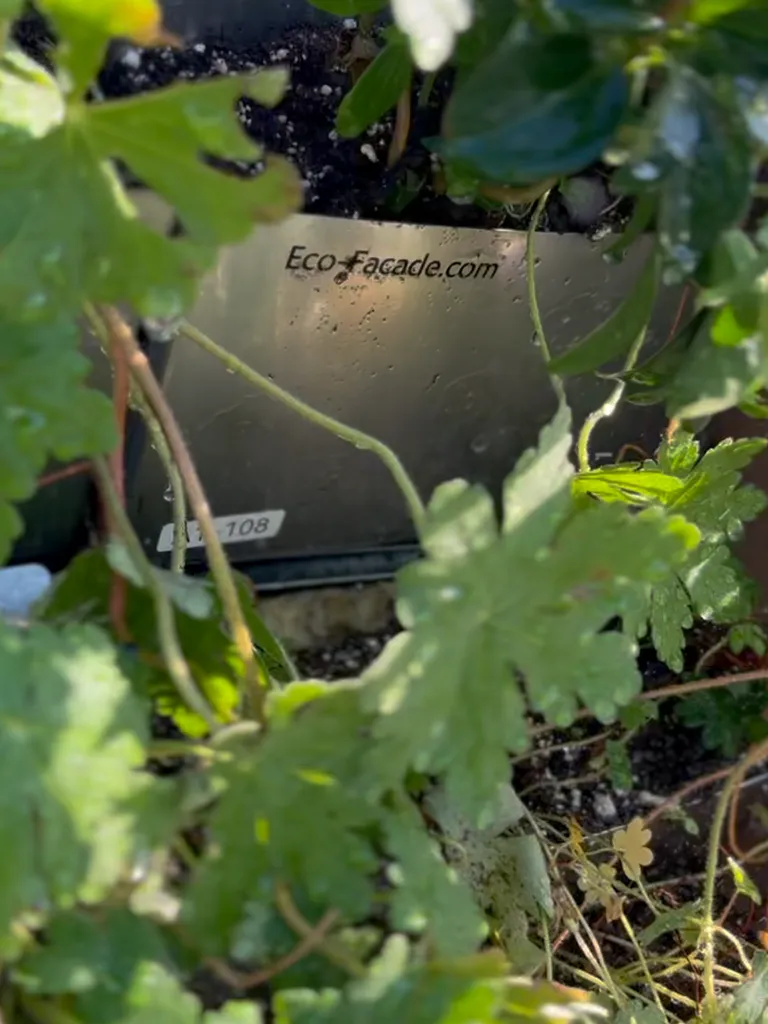Fire Safety of Green Walls
why the Eco-Facade system sets a new standard
Green walls (living walls) are gaining popularity as elements of sustainable architecture – improving biodiversity, reducing the urban heat island effect, and enhancing air quality. However, as their use expands – especially on tall and complex buildings – serious questions arise about their fire resistance.
In the context of evolving European regulations and growing awareness following tragic fires, this article explains why the Eco-Facade system, made entirely of non-combustible materials, offers a safe and compliant solution for modern architecture.
Green Walls as Cladding Systems: Misclassification and Risk
Despite their ecological potential, green walls are often misclassified. Instead of being assessed as full façade systems, they are subjected to simplified testing methods more suitable for single, homogenous materials.
This inconsistency is particularly visible in the UK, where the outdated Green Wall Guidance Document (GWGD) from 2013 is still referenced in Approved Document B (ADB). It allows compliance via EN 13823 (Single Burning Item, SBI) testing – a small-scale method that does not reflect the complex fire behavior of a living wall. Unlike conventional façades, green walls include vegetation with variable moisture levels, organic substrates, plastic irrigation lines, and mounting components – elements that cannot be reliably evaluated in controlled lab conditions.
Moreover, the European standard EN 13501-1, used to classify reaction to fire, does not account for moisture variability or the fire behavior of vegetation in a dry state, which can lead to a false sense of security.
Why non-combustible modules are critical: the Eco-Facade approach
The Eco-Facade system was designed with one priority: fire safety without compromise. Unlike systems that rely on optimal conditions – moist substrate, healthy plants, or working irrigation – Eco-Facade maintains fire resistance even in the worst-case scenarios.
Key Fire Safety Features Include:
- Modules made entirely of austenitic stainless steel – fully non-combustible and rated Class A1 under EN 13501-1.
- A1-class rock wool infill – inorganic and fireproof.
- No plastics – no plastic cassettes that could melt or sustain fire.
- Independent of humidity or irrigation – safety does not rely on weather conditions or plant vitality.
The non-combustible construction of the system is the key to achieving a fully fireproof green wall. While dried vegetation may pose a real fire hazard, in the event of a fire, only the plant layer will burn – not the entire plastic structure, which in many systems can peel off the wall like honeycomb. With a properly designed sprinkler system – which can be integrated with fire sensors – it is possible to create a green wall with a 100% non-combustible structure, where vegetation is a controlled factor, not a source of risk. Thanks to these properties, Eco-Facade could meet the requirements for buildings over 18 meters tall and residential buildings of types 3 and 4, as defined in the UK’s ADB 2022.
Why other systems fail in real-world tests
Plastic-based systems can pass SBI testing (EN 13823) under controlled conditions – with irrigated plants and moist substrate. However, in full-scale real-world tests such as BS 8414, the same systems often burn completely within minutes when components dry out or the irrigation system fails.
Fire spreads vertically and horizontally with alarming speed, especially when combustible plastic components are present in the façade cavity. Fire safety experts and insurers have long emphasized that small-scale tests are inadequate for assessing real-world fire risks.

Why other systems fail in real-world tests
Eco-Facade does not rely on assumptions. It is:
- fully non-combustible,
- mechanically stable under high temperatures,
- independent of humidity and plant health.
This makes Eco-Facade the best choice for architects, designers, and developers focused on safety, regulatory compliance, and long-term durability.
Green walls can support sustainability – but only if designed to meet the most stringent fire safety requirements. Eco-Facade avoids simplifications and questionable classifications by using entirely non-combustible materials and proven façade engineering principles.
In a world where many systems depend on irrigation and vegetation health, Eco-Facade delivers real safety, compliance, and resilience – not just on paper, but in reality.
Sources:
- Glockling, J. (2023). Green and Living Walls as External Cladding – A Joint Guide to Managing Risk. RISCAuthority/FPA.
- Wang, Z., Galea, E.R., Kotzen, B., et al. (2024). Fire safety risks of external living walls and implications for regulatory guidance in England. ScienceDirect.
- Ministry of Housing, Communities and Local Government (2022). Approved Document B: Fire Safety (ADB 2022).
